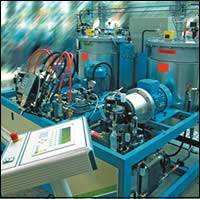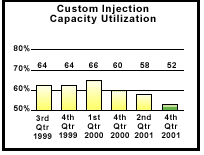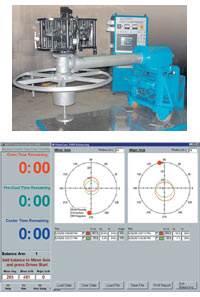polyolefins
OPP Bottles: Has Their Time Come?
Maybe this time the often-predicted breakthrough will actually occur. What could make the difference are improved resins, clarifiers, and machinery.
Read MoreNew Clarifiers & Nucleators: They Make Polypropylene Run Clearer and Faster
New packaging opportunities are opening up for PP, thanks to a new crop of additives that boost clarity, stiffness, HDT, and processing rates.
Read MoreAnother Supplier Develops Its Own Portfolio Of Metallocene PE & PP
In the past two years, a new player has quietly emerged among North American suppliers of metallocene-catalyzed polyolefins.
Read MoreClose-Up On Technology - New Technologies Add Zip to Rotomolding
Fully automated rotomolding equipment for nearly lights-out operation, a new approach to balancing molds, and a new oven design that trims space and energy requirements mark some of the new developments unveiled at the 27th Annual Fall Meeting of the Association of Rotational Molders (ARM), held in October in Toronto.
Read MoreNPE 2000 News Wrap-Up: High-Volume Thermoplastics
NPE 2000 offered up new HMW-MDPE and HMW-HDPE film and molding resins with enhanced mechanical properties, plus new VLDPE resins, a hexene LLDPE with improved stiffness/ strength balance, and an LDPE for high-speed extrusion lamination.
Read MoreNew Polypropylene Families for Packaging, Blends & Composites
Two new lines of polypropylene resins from Basell North America challenge PS, PET, PVC, and other PPs for clear, rigid packaging.
Read MoreNPE News Wrap-Up: Materials
New materials at NPE 2003 target automotive, appliance, and packaging sectors. Engineering thermoplasticsdominate the news, but there were also severalnew TPEs and a few polypropylene introductions.
Read MorePackaging & Automotive Top the News
Food and consumer packaging was the focus of new developments in polyolefins and styrenics, while automotive was the main target for new engineering materials.
Read MoreBlow Molding Gets Green Light in Detroit
Technical blow molding is changing the contours of automotive interior trim, load-bearing floors, seat-back systems, and under-hood ducting. Favorable economics, process refinements, and the emergence of tailored materials and equipment are taking the brakes off blow molding's earlier limits, and pointing a way to cost cutting.
Read MoreMaterials (K 2001 Preview)
New materials at K 2001 are weighted heavily toward the engineering variety, especially nylons, acetals, and TP polyesters. A large handful of polypropylenes round out the major news.
Read More









